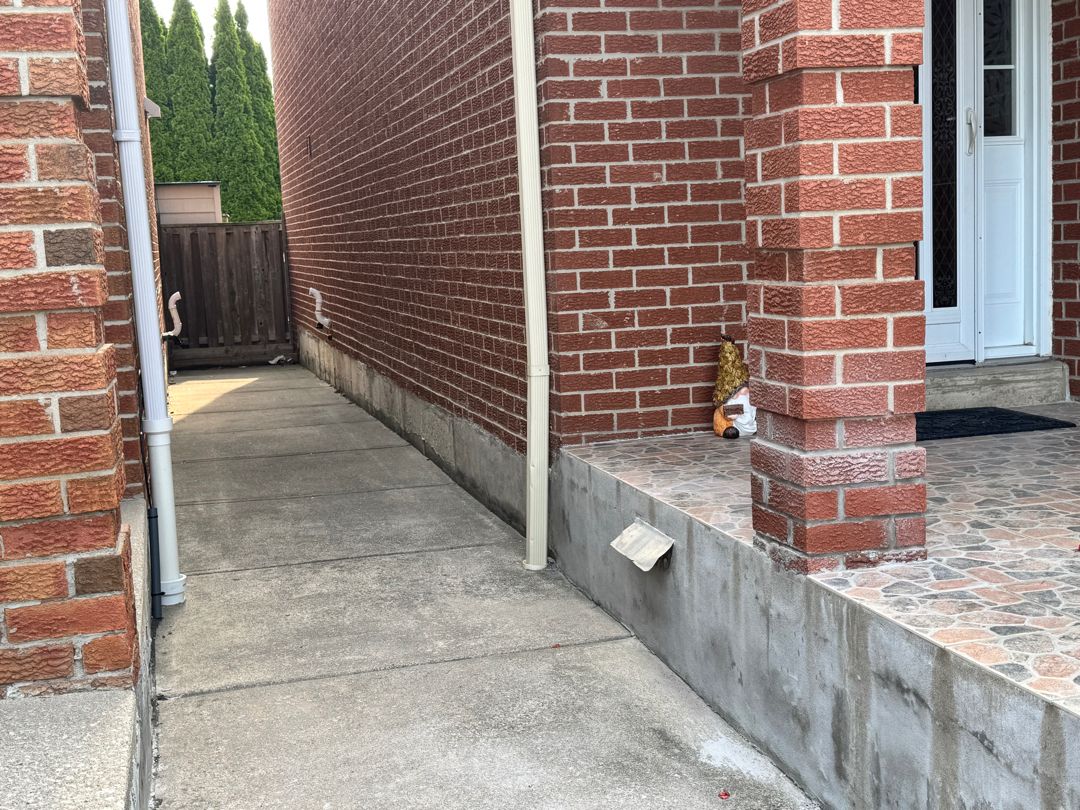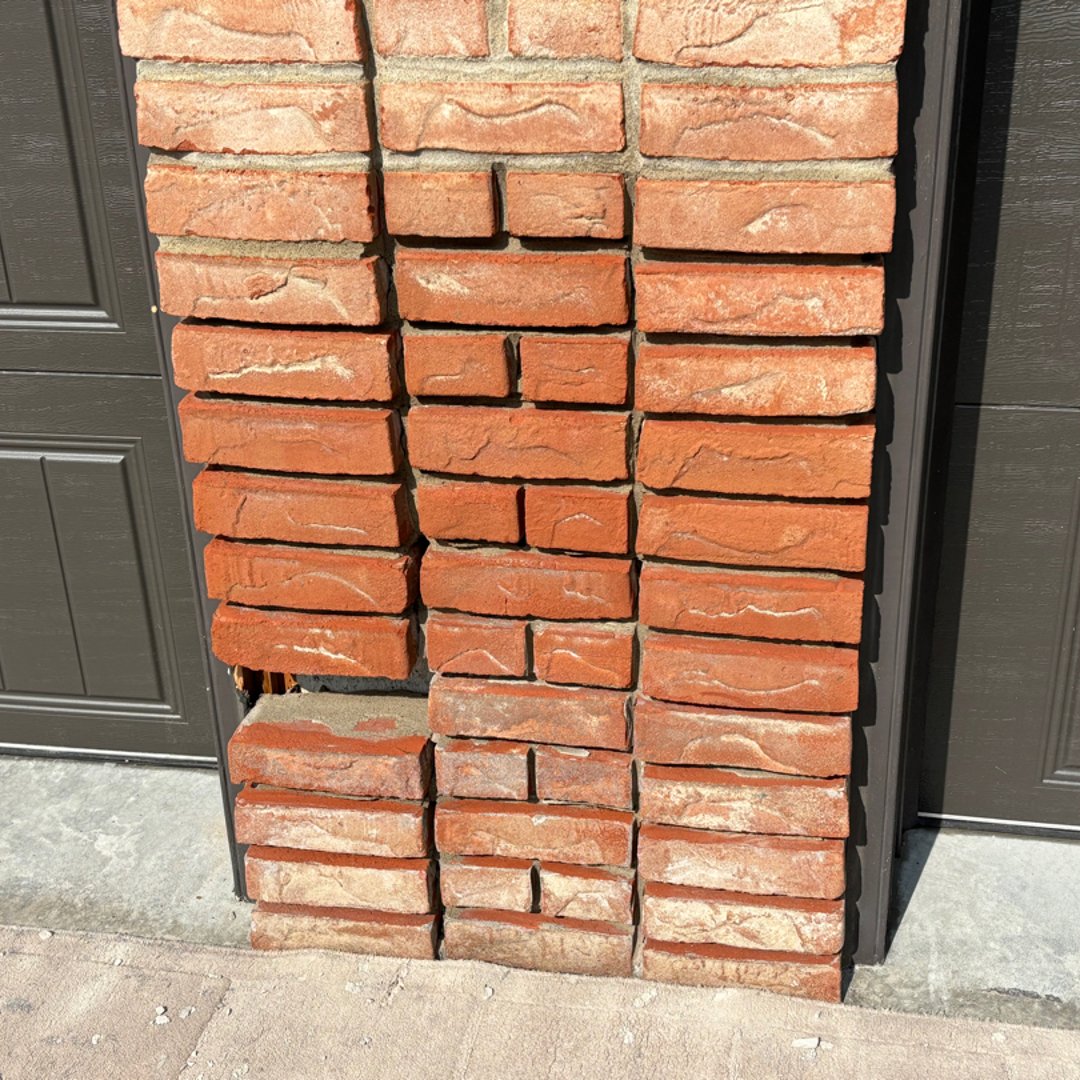
We Assess the Problem
We inspect the damage, identify what caused it, and plan the fix. No shortcuts—just a clear path to doing it right.


Work from Richmond Hill area projects.

Before & After
Our repairs blend seamlessly with existing masonry. Before and after from a recent project.
Water damage and freeze-thaw cycles had caused extensive spalling. We replaced damaged bricks with matching units and repointed the surrounding joints.

BEFORE

AFTER

Remove loose or spalled units, match the brick and mortar, and rebuild the area so the repair disappears.

Repair, rebuild, or remove unsafe stacks and add proper crowns, caps, and flashing so the chimney stays dry.

Cut out failing mortar and repoint with mixes that match the color, joint profile, and era of the home.

Prep, bond, and parge foundation walls and entries so flaking surfaces are sealed and ready for weather.

Repair flagstone, porches, and retaining walls or install new stone with proper drainage and tight joints.

Lime mortar, period-correct brickwork, and heritage-safe detailing to keep older buildings breathable and compliant.
800+ reviews
Fix My Brick was great! Prompt and professional at all steps from initial quote to job completion. Rodrigo and his crew were great to deal with and the work was excellent!
Brendan B.
Fix My Brick did a great job! They did exactly what they said they would for the agreed upon price. The guys who came to do the work were friendly and easy to work with.
Dave B.
Working in property management, I've relied on Fix My Brick for a variety of projects both big and small over several years and I would definitely recommend.
Rob H.
Our Process
Transparent process, quality results. Here's what to expect.

We inspect the damage, identify what caused it, and plan the fix. No shortcuts—just a clear path to doing it right.

Clean prep, proper materials, careful execution. We're detail-oriented because the small stuff determines how long the work lasts.

Repairs that blend in, a site you'd never know we touched, and a warranty you can count on.
Clear documentation of what's included in every project
We let you know when we're coming, what we're doing, and when we're done
We review the finished work together before sign-off
Ready to get started? Book a free on-site estimate.
Schedule EstimateWe regularly work in the neighbourhoods and nearby towns listed here.
We price jobs based on real site conditions so the quote lines up with the final invoice.
Small repairs vs. structural rebuilds.
Scaffolding or roof access requirements.
Brick sourcing and mortar color matching.
We provide detailed written quotes after an on-site assessment.
Your Quote Includes
Free on-site quote · No obligation
Everything you need to know before getting started.
Ready to Get Started?
Book your estimate online in minutes. Pick a time, upload project photos, and you're confirmed instantly. No phone tag required.
Service coverage
Explore all services available in Richmond Hill. Links below point to dedicated city pages where they exist, or to the main service overview.
Browse our locations across Ontario, or enable location to find the nearest office.